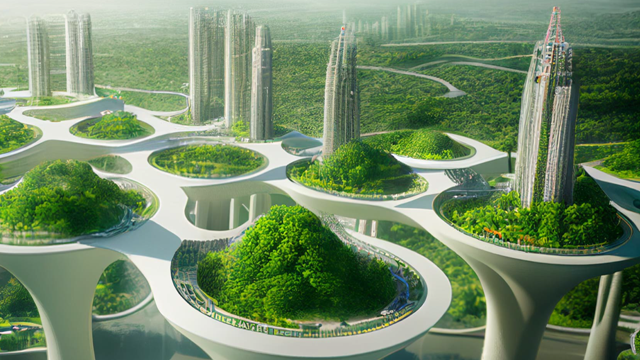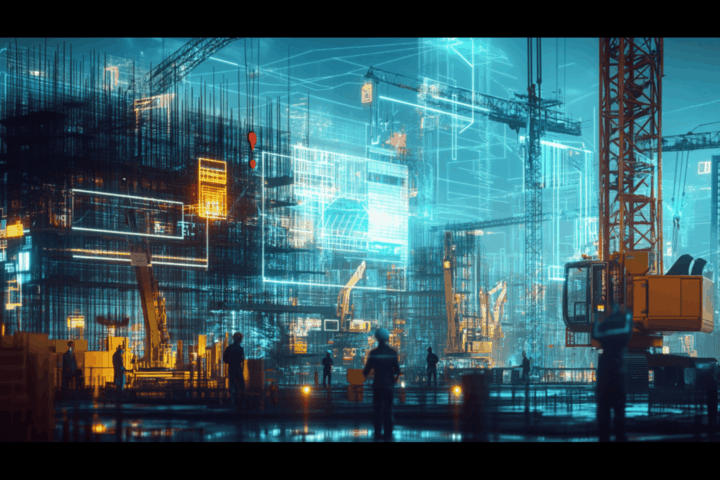by Aayush Chaudhary, Principal Architect, ACad Studio
Artificial Intelligence (AI) has transformed across diverse industries and sectors, including healthcare, manufacturing, entertainment, and education. However, its impact on architecture and design remains uncertain. There is a pressing need to comprehend how AI will influence collaborative efforts, communication, and creativity among architects and designers. Evaluating AI's potential benefits and risks in the design process is also imperative. Architects and designers must equip themselves with the necessary skills and knowledge to prepare for the future of their profession in the era of AI.
AI has been a vital tool in architectural design for several decades, primarily for automation, optimization, and simulation. For example, AI can automate repetitive or tedious tasks like drafting, rendering, or documentation. AI can also help optimize design solutions based on various criteria or constraints, such as cost, performance, sustainability, or aesthetics. Additionally, AI can simulate different scenarios or outcomes of design decisions, such as structural behaviour, energy consumption, or user experience. With the help of AI, architects can achieve more efficient and effective design processes, leading to better-designed structures and spaces.
AI is increasingly leveraged in architectural design, with several current and emerging applications. Among these is generative design, which uses algorithms to generate multiple design options based on predefined goals or parameters. This technique can enable architects to rapidly and effectively explore a large and complex design space while uncovering unconventional design solutions that may not have been possible through human intuition alone.
Another important application of AI in this field is computational creativity, which employs algorithms to produce original and valuable outcomes recognized as creative by humans. This technique can help to enhance human creativity by offering new ideas, insights, or perspectives while also challenging human assumptions or biases by producing unexpected and surprising outcomes.
Natural language processing is another technique utilized in architectural design, involving algorithms to understand and generate natural languages such as text or speech. By improving communication and interaction between humans and machines in the design process, this technique can enable designers to extract valuable information and insights from large amounts of textual data, such as documents, reports, or reviews.
Finally, computer vision is a powerful technique that uses algorithms to comprehend and generate visual information such as images or videos. This technique can significantly enhance perception and representation of the physical world in the design process while also enabling designers to create immersive and realistic user experiences through augmented reality (#AR) or virtual reality (#VR)
Considering its various opportunities and challenges, it is crucial to approach AI in architectural design with caution and responsibility. A human-centred and collaborative approach to AI in design is also essential, where humans and machines work together as partners instead of competitors or substitutes. AI has several benefits for architectural design, such as automating routine tasks, increasing productivity, optimizing design solutions based on various criteria, generating novel and diverse design alternatives, enabling data sharing and feedback among different stakeholders, and creating immersive and realistic experiences by simulating various scenarios or outcomes of design decisions.
However, using AI in architectural design is also associated with risks and challenges. These include the potential loss of human control and agency when delegating design decisions to machines or algorithms, reduced human creativity and diversity by relying on biased data or parameters, the creation of design solutions that may have negative impacts on human values or rights, and technical and practical limitations that come with depending on the availability and quality of data or algorithms.
Architectural design is being significantly transformed by AI, which requires architects and designers to adapt and improve their skills and roles. To prepare for the future of their profession in the era of AI, here are some measures architects and designers can take:
- Stay informed about AI and its applications in design by keeping up with the latest trends and developments in this field.
- Experiment with AI tools and techniques in design, exploring their potential and limitations in various contexts and domains.
- Develop critical thinking and ethical reasoning skills to assess the impacts and implications of using AI in design.
- Cultivate creative and collaborative skills, leveraging humans' and machines' strengths and weaknesses in the design process.
- Embrace diversity and inclusivity, engaging with different perspectives and stakeholders in the design process. AI is not a threat nor a substitute for architects and designers but rather an opportunity and a resource for them. By using AI wisely and responsibly, architects and designers can enhance their profession and create better outcomes for themselves, their clients, their users, and their society.
The advent of AI has brought about a powerful and disruptive force that is reshaping the future of architectural design. AI offers several benefits for architectural design, such as increased efficiency, improved quality, enhanced creativity, better collaboration, and immersive experiences. However, integrating AI in architectural design poses risks and challenges, such as losing human control, reducing human creativity, increasing ethical dilemmas, and facing technical limitations. Therefore, using AI in architectural design with caution and responsibility is essential, considering its opportunities and challenges. A human-centred and collaborative approach to AI in design is also necessary, where humans and machines work together as partners rather than competitors or substitutes. This approach will help architects and designers prepare for the future of their profession in the age of AI and create better outcomes for themselves, their clients, users, and society.
Moreover, integrating AI in architectural design presents both opportunities and challenges. Architects and designers must adopt a cautious and responsible approach towards its use, considering both the benefits and risks. A human-centred and collaborative approach is necessary, where humans and machines work together as partners towards a common goal, leading to better outcomes for all stakeholders.


















